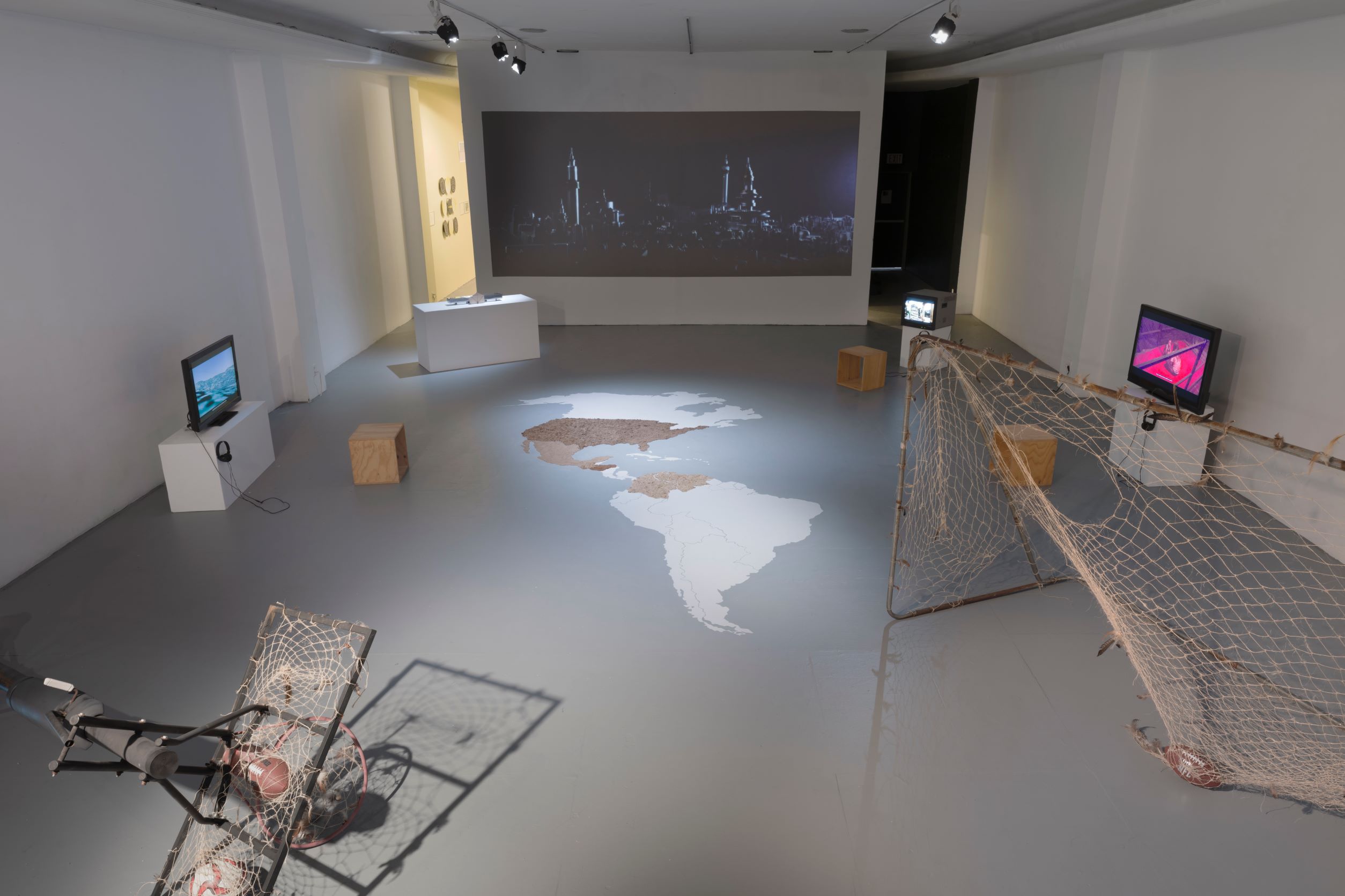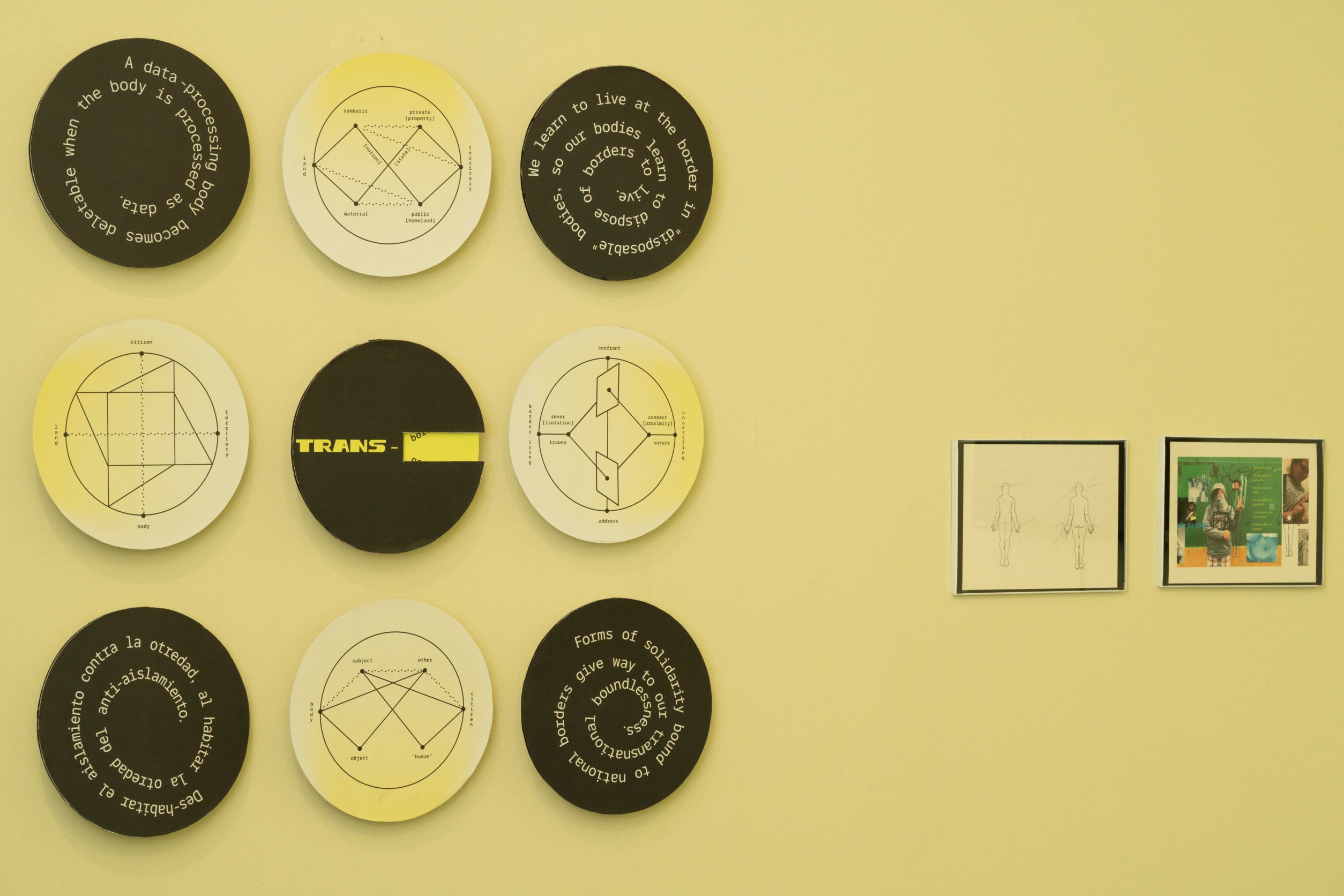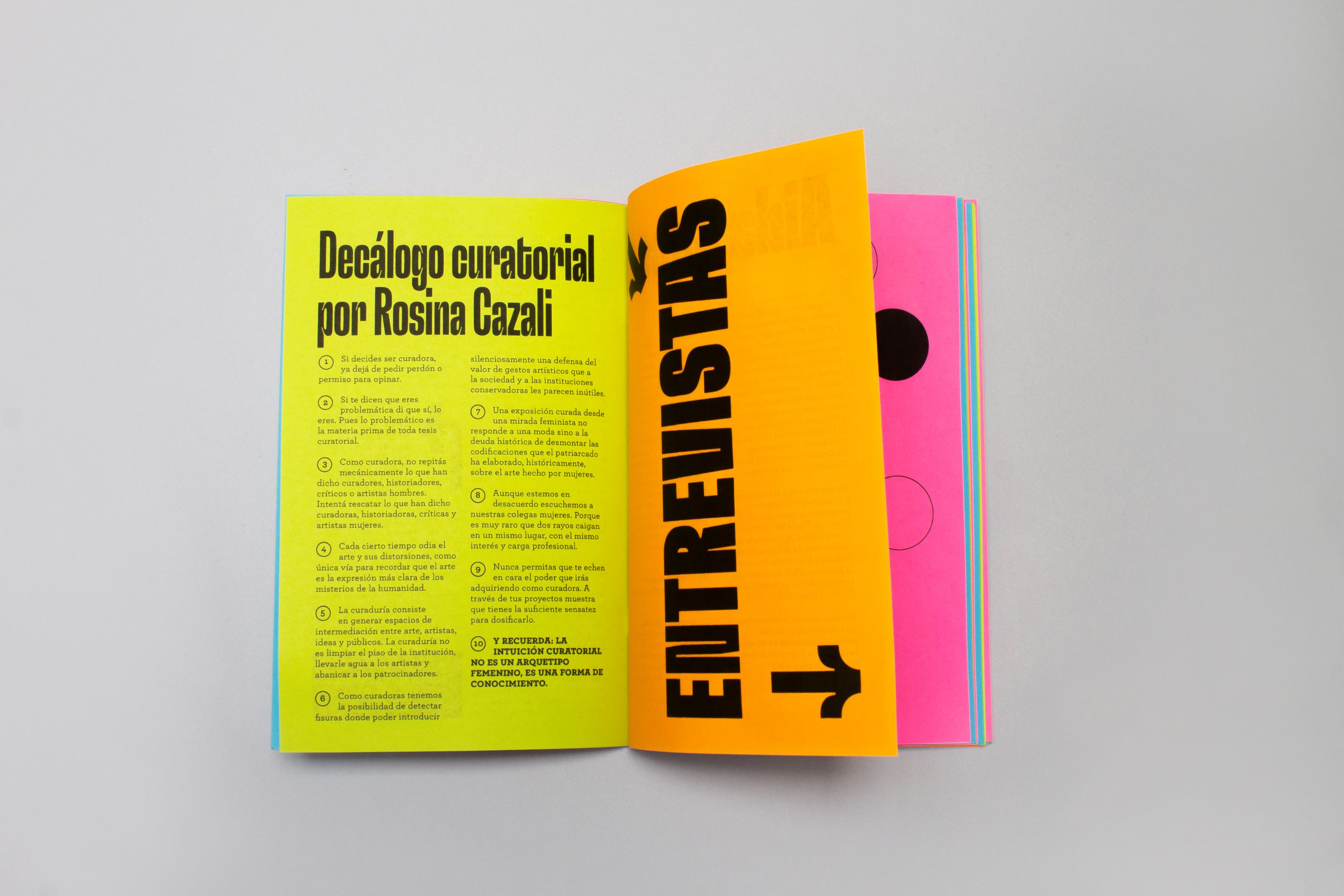
17.01.2022
On a path that begins to outline a more diverse presence in Central American art, curator Maya Juracán talks with a few of the region’s collectives about the possibility of visualizing futures where creative processes endowed with life expand and contract; healing and weaving genealogies to write another history of art.
“There is nothing new
under the sun
but there are new suns.”
Octavia Butler.
Thinking about futures may seem like a very distant situation when the present is a constant struggle with existence at every moment. And that is how we exist in the art world in this Central America. In Guatemala, it wasn’t until 2018 that the Municipal Cultural Center had the first exhibition of Central American women, an art show also curated only by women. In previous instances, in Costa Rica in the middle of 2017 a museum curator claimed that there were no women artists producing at that time. It is important to reflect on this, since throughout the isthmus there are many women curators, in contrast to the positions of power in foreign and local museums belonging mainly to male curators.
In this context and within this region, forming feminist, transfeminist, or anti-patriarchal collectives of women curators and artists represents going against all odds. It is about forging futures in which we exist. However, this statement also entails not trying to fit under the previously established linear narratives, that is, collectivizing ourselves to overthrow those patriarchal rules that propose a single way of telling the history of art. It is daring to tell our stories to ourselves in our own words and through our own feelings.
In this interview I have brought together four Central American and diasporic collectives who narrate the possibility of the encounter as a peripheral practice that deprograms memory.

PFAC (Panama): Panamá Fem Art Coalition begins with María Raquel Cochez, Giana De Dier, Laura Fong Prosper, Momo Magallón and Ela Spalding, following the need to create a space for women artists by women artists in Panama to ensure the education, support, and dissemination of artistic and creative practices.
Casa MA (Costa Rica): Casa MA is a community focused on the dissemination of creative practices generated by women and diverse identities in the territory of Costa Rica and its diaspora. The project was born from the desire to strengthen feminist struggles in Latin America through art, and from the urgency to respond to the racist and misogynist logic organizing the local cultural and social scene. We organize and offer exchanges and free public meetings, with the aim of building collective spaces for thinking about shared problems. Since 2020 the project has been managed by artists and researchers Susana Sánchez Carballo and Gala Berger.
What tools have you used in your projects that you consider hegemonic ruptures and have helped you to resist?
La Revuelta: We do not read ourselves as a collective horizontally, but rather through a constant spiral where we learn from everything and everyone through knowledge in transformation. In the exercise of answering this question, this emerged:
Intergalactix: Our tool is the creation of a supportive network for learning, dialogue, and exchange, and above all, caring relationships that break with the capitalist curatorial structures of production and innovation. The network opens up possibilities for expressing our narratives. The exhibition becomes a container and a platform, rather than the ultimate goal. This tool is inspired by the Zapatista Intergalactic Encounters of 1997, as well as by Zapatista thought—anti-neoliberal and autonomous—which imagines a network of solidarity in which the seeds of resistance are planted in different parts of the globe.
The exercise of collective and retrospective mapmaking is a methodology we have used as a strategy to trace invisible narratives. It is a process which allows us to recognize connections and establish links with other artists, poets, and curators who have forged critical paths in the arena of social justice, politics, and art. Throughout our research, we have collected different maps and traced genealogies that enable us to reinvent our own roots.

Casa MA: The voice is undoubtedly one of our main tools. That is why we develop projects such as Relatos Extemporáneos [Extemporaneous Stories], where we conduct interviews with women artists from recent history in Central America.
Due to the scarce surviving printed material in the region, our voices are memories resistant to fire, flood, limited space, and even pest invasion.
Thus, our interviews quickly became a feminist research method and creative practice helping us to explore micro-histories of engaged artistic production that contribute to questioning patriarchal structures. These feminist oral histories aim to recover conversations as another way of building infrastructure and creating art history, reclaiming oral memory as a politically and ethically grounded relational practice.
Something very important within community-based feminism is healing. How is your collective, in addition to being an artistic project, a safe space of complicity?
La Revuelta: This collective arose from the stagnation generated by the pandemic, when each one of us was going through different processes and situations. We were locked down after taking to the streets, fighting our fears, raising our voices and taking up space. Just as our experiences are collective, they are also individual, and that implies that the healing is also individual. This is a safe space because we decided every day to believe in it and to build it out of affectionate care and radical tenderness. It was important for us to understand that healing is part of building: to organize our anger in order to know how to make decisions. A safe space is also a place where we can name our discomfort without feeling vulnerable.
Intergalactix: Affectionate relationships, our personal experiences, are an important form of knowledge for mutual collaboration. In that context where affect, critical thinking, and theory are organically linked,
Intergalactix becomes a community space where many of us share our stories, narratives, and ideas to sustain a network in the pursuit of honoring the collective life struggle.
The testimonies of migrants in The Fire Theory integrate and amplify their artistic works, resonating in a safe place, a place of listening in which many identified themselves. Tanya Aguiñiga, together with students from the Jardín de Mariposas shelter in Tijuana, created small spiritual spaces, ceramic copalero incense burners that look like altars, small windows of memory where one can have a moment of healing, of mourning, of ritual.
PFAC: We formed in 2020 as a result of the quarantine. At that critical moment, our founder María Raquel Cochez, came up with PFAC to create community among Panamanian women artists and/or those established in the isthmus. The feeling of community and mutual support is central as we believe it is key to the empowerment of women artists. Additionally, we are a space that seeks to question from within the problems that affect us all, supporting the artistic work that addresses current issues and allows us to talk about multiple forms of violence that affect our land.

Casa MA: At this time, when the fragility of the region is exacerbated by the pandemic, we believe that the word “healing” has other connotations beyond the neoliberal categories of self-care. To this end, feminisms helped us understand that our processes are multiple and often contradictory; it is precisely in these intersections where we find ways to collectively construct different social dynamics. For us, reparation techniques are directly associated with the possibility of giving valuable information back to the younger generations, and that is why we focus on documenting moments in recent history in which serious exclusions have occurred in order to prevent them from repeating themselves. We simply cannot stand idly by and wait for things to change on their own. It is necessary and urgent to create an expansive debate on the ways in which the politicization of the cultural debate—driven by feminisms—forces us to a critical revision of the patriarchal social structures established in the history of art. In this way, the notions of memory, public space, citizenship, education, and recovery can be transformed.
Do we want to redefine or create a new word for curatorial practices?
Intergalactix: A transfeminist curatorship seeks to break with traditional models of exploitative capitalist rhythms (the ephemerality of products) and aligns itself with the idea of spiraling time: long-term, committed, flexible projects where voices constantly dialogue, where critical questions are revealed. For example, Cognate Collective, in collaboration with translators and scholars of the Kumeyaay, Tongva, Kaqchikel, Zapoteco, and Mixteco languages, asks: How can you contribute to the decolonial project when you find yourself in a land of other Indigenous peoples, when as mestizos from migrant families we have other narratives?
A transfeminist curatorship seeks to ally itself with other resistances, seeks to weave solid relationships, and recognizes that there are also multiple and infinite forms.
Spiral thinking implies turning to relate from different points: opening horizons, expansion and contraction. With Intergalactix and Kaqjay Moloj, Beatriz Cortez, and Fiebre Ediciones, we have learned that time is long, continuous; it is the futures circulating within the past and the present. Futures are heard from the past and reflected in our present, then back to the past.

PFAC: As a collective and community, we are constantly imagining a future of decolonization and feminism. This imaginary is reflected in our initiatives to build alongside emerging artists of feminized or non-binary identities, in order to produce diverse knowledge, create an archive of complicit artists, and articulate an authentic feminist curatorial gaze embracing our conversations and struggles.
Casa MA: How can we imagine the future when the past has not yet been examined? How are we going to live that future when violence is chronic in the present? How to wake up tomorrow with all these books that have not yet been written? How to transform museums that have not even been created? How to convince them that we exist?
Gala Berger of Casa Ma turns the last question into more questioning that traces possibilities. This conversation, more than an interaction, sought, paraphrasing Donna Haraway, an infringement to affect and be affected by the words of others. In this spectrum of questioning, I ask: Are we aware that our privilege brought us to this space? How are we incorporating political battles about the body, the land, and capitalism into our practices? How is our theory a politically active social tool? Are we naming these realities comfortably for the art world? In this conversation many collectives raise questions as a means of encounter. This is one more way of breaking exercises of power, even if our closeness to hegemonic cultural capital is undeniable.
Comments
There are no coments available.